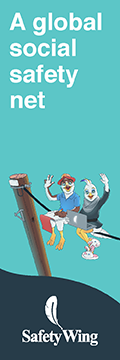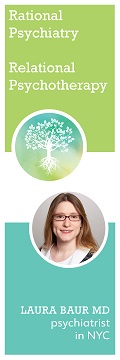A little while back I discussed how, contrary to the conventional wisdom that they’ve been “proven to work”, anti-rape campaigns aimed at men have zero evidence of effectiveness. I added that this was no surprise, since similar public awareness campaigns have a long history of failure.
That was overly simplistic, as commenters quickly reminded me. Some public awareness campaigns (or things like public awareness campaigns) have a history of spectacular failure. Others have a history of spectacular success. To give a couple of examples:
Failures
– DARE (Drug Abuse Resistance Education) is a program in US schools where teachers and police officers spend a couple of hours a week telling children how bad drugs are and giving them techniques to avoid peer pressure to use them. It famously fails to work and in some cases even makes children more likely to do drugs.
– Scared Straight is a popular program in which convicted inmates talk to deliquent kids and explain the costs of a life of crime and how unpleasant prison can be. Several studies clearly show that the intervention makes these children actively more likely to become criminals, and is so harmful that “each dollar spent on Scared Straight programs incurs costs of $203.51”. Needless to say there continue to be dozens of these programs all around the country.
– Sex education in schools is famously ineffective. There is a very large body of research showing abstinence-only sex education programs do not make teens less likely to have sex. Research on comprehensive (ie contraception-including) sex education programs is more mixed, and although everyone trumpets the positive results in order to further discredit the abstinence-only programs by comparison, the actual research is more nuanced and less optimistic. The limited effects it does get may work by spreading genuinely novel information (“condoms exist! STDs exist!”) rather than “awareness raising” per se.
– “Diversity training” and “sensitivity workshops” and everything in that category of thing have no positive effects are are often associated with negative effects (for example, after being introduced in companies those companies’ percent of top executives who are minorities goes down)
– A couple of recent studies (1, 2) are converging on the hypothesis that stigmatizing overweight people makes them more likely to gain weight. This is true even when the stigma is delivered in the form of a (presumably more polite) public awareness campaign instead of just an acquaintance calling you a lardass. Although I agree a line can be drawn between “public awareness campaign” and “stigma”, in practice it can sometimes be kind of fuzzy – for example, although most people wouldn’t use the word, it sure seems like the point of “Don’t Be That Guy” anti-rape campaign is to stigmatize rape.
Successes
– Several people have brought up MADD’s campaign against drunk driving, which corresponded to a 65% decrease in drunk driving over the past 30 years. However, I can’t find good evidence on whether MADD started a traditional public awareness campaign or just lobbied for changes in various laws and got lots of publicity in the process. I would also note that there have been spectacular and somewhat mysterious decreases in nearly all crimes since 1982 – alternately attributed to rising abortion rates, falling lead rates, and stricter sentencing – and it’s not obvious how much drunk driving is just piggybacking on that success.
– Seat belt use has gone from very low to near-complete, and there is decent evidence that awareness campaigns like Click It Or Ticket contributed to this (fun fact: opponents of mandatory seatbelt laws launched a counter-campaign called “Stick It To Click It Or Ticket”).
– Advertising is kind of like a “public awareness campaign” about a particular product. It obviously works or else companies wouldn’t spend so much money on it.
– Anti-smoking campaigns do seem to lead some people to stop smoking – or at least increase calls to stop-smoking hotlines. These are most effective when associated with scary and graphic images – for example, one shows a picture of a man with a hole in his throat after a throat cancer operation. There are a lot of successful public health campaigns along these lines.
Analysis
It’s pretty hard to draw a consistent “this works, that doesn’t” conclusion from these facts.
Just to give an example, one of the most effective campaigns – anti-tobacco – uses the same strategy as one of the least effective campaigns – Scared Straight. Both try to present very graphic images of the horrible things in store if people do not change their ways. One works great, the other is counterproductive.
To give another, both anti-obesity and anti-drunk-driving campaigns try to employ stigma, but one of them has been very successful and the other has if anything the opposite of the intended outcome.
Some people I talked to about this at the New York Solstice Celebration suggested that product advertising works because businesses have financial incentives to get it right, but other public awareness campaigns don’t because the government mostly wants to signal virtuous effort and has no incentive to design genuinely effective advertising change minds. But some government and nonprofit public awareness campaigns are successful, and I’m betting they’re all hiring the same ad agencies anyway.
Another theory was that awareness campaigns work when there’s a real need for awareness – either the target demographic is literally unfamiliar with the concept in question (for example, people may not have previously been aware the police were cracking down on non-seatbelt-users) or need reminders to keep an option fresh in their minds (Coke advertisements making everyone think about Coke when they’re deciding what to buy). If it’s just stating ad nauseum that some stigmatized action like premarital sex is still stigmatized, it’s not going to do much. But this is disproven by the success of MADD and the stop-smoking campaign, and by the failures of DARE (which very often does teach kids things about drugs they didn’t know before).
The biggest effect I can see is that anything which caters to a captive audience is more likely to be counterproductive. DARE and sex-ed are inflicted on schoolchildren who would rather be doing something else, and a lot of the time it ends up as “this uncool authority figure I don’t like lectures about how me and all my friends are bad people”. Scared Straight programs are usually court-mandated, often as a punishment for past delinquent behavior. Employees are forced to attend diversity training, and once again it may be billed as a “punishment” for saying something politically incorrect. Is it so far-fetched that people forced to suffer through these campaigns will end up resentful, and that resentment will translate into negative feelings about the campaign message?
I’d like to extend the theory to the obesity case and say that, once again, stigmatizing the obese in anti-obesity campaigns causes obese people to associate the negative feelings they get from these campaigns with “eat less and exercise” message. But this proves too much: why wouldn’t the scary disfigured people in the stop-smoking ads make smokers associate their negative feelings with quitting? Perhaps the negative feelings have to be of a certain type for this to work? Anger and resentment, rather than fear and disgust? Questions, questions.
I still don’t feel like I have a good ability to predict the success or failure of any future public awareness campaign. If I wanted to promote the “Don’t Be That Guy” anti-rape campaign, I would point out that it consists mainly of flyers on lampposts etc, so there’s no captive audience nor any reason to consider it a “punishment”. If I wanted to inveigh against it, I’d argue that empirically it offends a whole lot of men who think they’re being binned as potential rapists and so definitely causes the anger and resentment which are the hallmark of a counterproductive campaign. I really don’t know.
I guess part of the reason I remain skeptical of public awareness campaigns is a lingering terror at what it would say about society’s collective sanity if they worked. Think about it. Imagine that TV ads warning people not to do drugs really decreased drug use. Then think about how for the past 30 years, we haven’t been consistently running those ads, but we have been consistently putting anyone who uses drugs behind bars for their entire lives. Imagine if anti-rape ads worked, and only two Canadian cities have ever run them. And no city afaik has ever run ads against child abuse!
I would welcome more examples of public awareness campaigns that clearly succeeded or failed. Post them in the comments. Please exclude ones that measure “success” by surveying people about whether they saw the campaign or became aware of the campaign message – I’m interested in ones that actually change behavior.
















